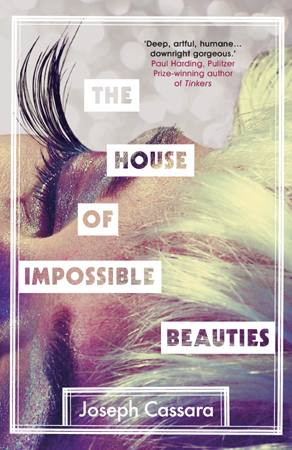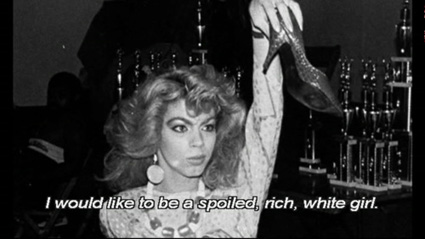RuPaul's Drag Race has found a global audience in recent years and I've been a huge follower of it since the third season. It's still one of the highlights of my life hearing RuPaul praise my blog on his podcast. (You can listen to the audio of this at the bottom of my intro page here.) The widespread fandom of this show has popularised drag as an art form again so it seems like the right time to look back at some of the most significant drag movements of recent history. The documentary 'Paris is Burning' captured instances of the fiercely outrageous ball culture in NYC in the mid-to-late 1980s. One of the figures memorialised on film was a drag queen named Venus from the house of Xtravaganza, the city's first Latino drag house. In his debut novel “The House of Impossible Beauties”, Joseph Cassara fictionally recreates Venus' story as well as tales about some of the other queens who were central to this drag family. It sympathetically follows the way these marginalized individuals were often ostracised by their families, but found sisterhood and support from fellow queens. Together they created and defined a sub-culture all their own. There are many moments of high drama and camp fun, but Cassara also emphasizes the hard gritty reality of their lives which involved prostitution, habitual drug use and AIDS. The novel skilfully invokes the aesthetic and feel of the era with a language and dialogue heavily inflected with Spanish phrases and drag lingo that totally draws the reader into this bygone world.
Part of the motivation behind creating the Xtravaganza drag house was that queer Hispanic individuals didn't feel like they could belong in the other drag houses at the time. A character named Hector notes in letter to a choreographer he admires “someone told me that you can’t join if you’re not black. I thought, Well, gee, I’m not black – but I certainly ain’t white. Especially if I’m talking Spanish, all the white people in Manhattan look at me like I might as well be black.” It's dismaying how a lot of queer culture that often satirizes and separates itself from mainstream straight culture still carries many reactionary prejudices within it. So some individuals within these drag houses exhibit signs of racial segregation, sexism and homophobia. As a result, Hector and drag queen Angel dream up and form a Latino drag house all of their own. The novel charts sections of this House's history from the early 80s to the early 90s.
Venus Xtravaganza in 'Paris is Burning'
Cassara's style of storytelling is somewhat choppy in how it portrays scenes from a particular time period, often introducing readers to new characters and then tunnelling back to give his characters' backstories. Significant scenes or events are often left out and only referred to and this usually strengthens the impact of the tale. For instance, one character's death from AIDS is only brought up in dialogue and the immediate aftermath of the death is shown in very brief flashes. It would have been entirely unnecessary to show the full journey of this character's death from diagnosis to the funeral. His death is felt all the more keenly because it's only a part of a tapestry of loss from this time period. The persistent and pernicious presence of the disease in the characters' lives is handled very well as is the near universal rejection the queens feel by their families (with the notable exceptions of Angel's supportive brother and Juanito's grandmother who indulges his penchant for dressing up.) However, it feels like there are one too many backstories of how male characters are rejected by their families because of their femininity. Instead, it would have been good if there were more scenes showing the drag balls themselves as there is only one instance of a competition portrayed in the narrative despite multiple trophies that adorn the shelves of the House of Xtravaganza.
This novel is a striking tribute to those who endeavour to create and inhabit beauty as a way of transcending the gruelling reality of life. It would have been easy to make it about over-the-top fabulousness and girrrlish ki ki. I admire how Cassara portrays the real dangers and precariousness of these drag queens' lives and pays tribute to their strength and artistry, but also acknowledges their occasional flaws and superficiality. There are many instances of humour from the challenges of wearing a snake as an accessory to how one queen notes that “The biggest shame in the whole world was that coke wasn’t a vegetable.” But, although the novel is true to life in representing how the majority of these queens' hard lives came to bleak ends, the narrative sometimes gets bogged down in the harshness of their persistent suffering in a way that felt very reminiscent of Yanagihara's “A Little Life”. It's difficult to imagine how lives marked by such tragedy could be told otherwise, yet I was left longing for some more levity towards the end. Nevertheless, it's an enthralling experience following these queens' powerful stories and I love how Cassara has dynamically brought them to life.










